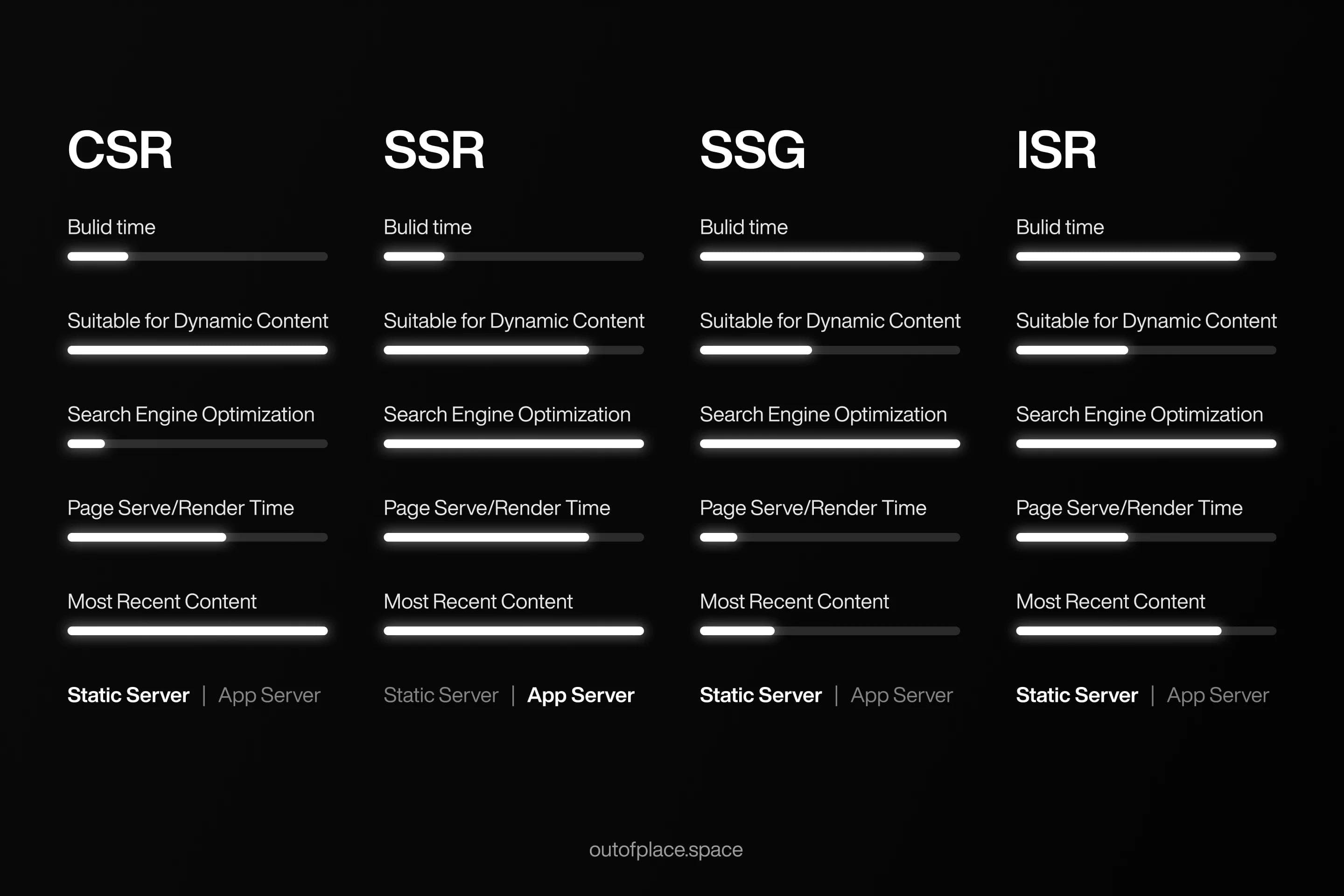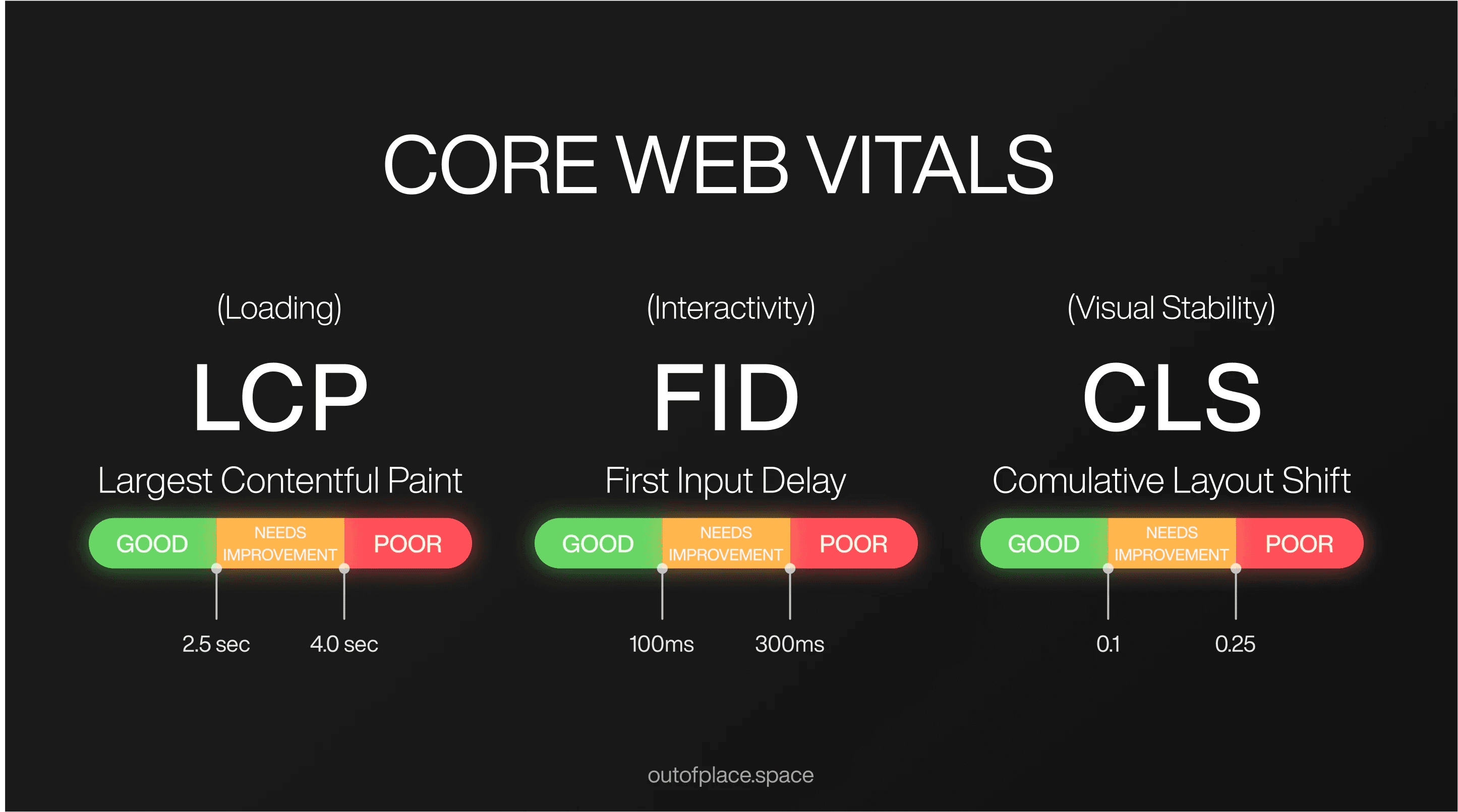What is Next.js?
Next.js is a modern framework based on React that allows you to create modern and very fast online stores, websites, and web applications. But how exactly does Next.js make your site or store run quickly, be friendly to Google, and... users simply love it?
Main Advantages of Next.js:
- Server-Side Rendering (SSR) - Imagine your website is a restaurant. Instead of waiting for the customer to assemble a burger from ordered ingredients themselves, you serve them a freshly prepared meal. That's how SSR works—the user gets a page ready to browse, which means faster loading and better SEO.
- Static Site Generation (SSG) - It's like preparing dishes before the restaurant opens. Pages are generated in advance, so when someone visits your store, they immediately see ready content without unnecessary delays. Ideal for product pages that need to be as fast as lightning.

Why It's Worth Choosing Next.js to Create an Online Store
Performance and Speed
In the world of e-commerce, every second counts. Studies show that if a page loads longer than 3 seconds, over half of users give up and leave the site. Next.js offers numerous solutions that increase the performance of an online store, including:
- Pre-rendering: Allows generating content before the user enters, which shortens the application's loading time.
- Automatic Code Splitting: Speeds up loading by loading only necessary parts of the application.
- Build Size Optimization: Reduces the size of the application, improving its speed.
- File System Routing: Simplifies the creation of paths in the application.
- Support for TypeScript and APIs: Increases code quality and enables API integration.
- SSR and SSG: Enable dynamic data fetching and fast rendering.
What does this give?
Fast pages reduce the bounce rate and improve user experience, leading to more purchases. The faster the site works, the longer users stay on it, increasing the chance of completing a transaction.
Amazon conducted studies that showed that every 100 ms delay in page loading results in a 1% drop in sales. This shows how crucial fast site operation is for online stores.
The Biggest Brands Using Next.js:
- Nike – The global clothing industry giant uses Next.js to offer lightning-fast page loading, which improves user experience and supports visibility in search results. Thanks to the headless commerce approach, Nike creates unique, interactive shopping experiences for customers.
- Netflix – The streaming platform uses Next.js to optimize the user interface, providing smooth content browsing and better SEO, crucial for maintaining viewer engagement.
- Zalando – A leading European online fashion store uses Next.js to deliver personalized content and recommendations to users, as well as ensure responsiveness and speed of operation.
These examples show the scale of Next.js applications—from e-commerce to SaaS applications and entertainment platforms. Brands that prioritize high performance, flexibility, and top-notch user experience, regardless of device or location, choose this solution.
SEO Optimization
Does Next.js help with SEO?
Yes, and at a high level. Thanks to Server-Side Rendering (SSR) and Static Site Generation (SSG), Next.js allows rendering content on the server side, which means that search engines like Google see a full HTML page instead of JavaScript code snippets. This significantly improves visibility in search results and content indexing.
Why does this matter?
Page performance optimization is one of the key SEO factors. The faster the page loads, the more likely Google is to consider it valuable, which translates into better positions in search results. Core Web Vitals—key Google metrics such as Largest Contentful Paint (LCP) and Cumulative Layout Shift (CLS)—play an important role here. Next.js helps meet these requirements through prefetching, resource optimization, and responsive loading.

Key Next.js benefits for SEO:
- Speed and Performance: Thanks to SSG and Incremental Static Regeneration (ISR), the page is not only fast but also constantly up-to-date, which increases user time on the site and reduces bounce rate.
- Friendly URLs: Next.js allows creating dynamic and easy-to-index URLs, supporting site structure and improving indexing.
- Image Optimization: The
next/imagecomponent automatically adjusts the format and size of images, which translates into better LCP indicators. - Metadata and Open Graph: Managing metadata is simple, allowing optimization of titles, descriptions, and integration with Open Graph and Twitter Cards, increasing attractiveness in search engines and social media.
- Structured Data (Schema.org): Facilitate search engines' understanding of the page content, which can lead to highlights in search results, such as rich snippets.
User Experience (UX)
Why is UX key?
A customer who feels good on the site is more likely to browse products longer and complete purchases. Slow-loading pages frustrate users and discourage them from returning. Next.js eliminates this problem thanks to its performance.
How does Next.js improve UX?
Thanks to fast loading, responsive design, and stability, users experience smooth navigation. This means fewer lags, smoother scrolling, and faster loading of subsequent subpages, which translates into greater customer satisfaction.
What does this mean for business?
Better UX leads to higher conversions. If a customer feels they can comfortably browse the offer, they are more likely to make a purchase and return for more. User satisfaction with the site's seamless operation is one of the main factors building brand loyalty.
The Process of Creating an Online Store in Next.js
Stage 1: Requirements Analysis and Architecture Design
The first step is to understand business needs and plan the store's operation. Here we decide how the page will be rendered (SSR or SSG) and set up the architecture to make everything run smoothly.
Stage 2: Implementation of Basic Functions
At this stage, the store begins to take real shape. We create a product catalog, shopping cart, and ordering system—the foundations of every e-commerce platform. With Next.js, implementing these functions is quick and efficient.
Stage 3: Integration with Payment and Logistics Systems
The next step is integrating the store with payment systems like PayU or Stripe, and logistics services like DPD or InPost. Next.js facilitates these processes by efficiently connecting with external APIs.
Stage 4: Testing and Optimization
Before the store goes live, it needs to be tested. This includes functional tests, performance tests, and bug fixes. Optimization ensures fast loading, stability, and better user experience.
Stage 5: Deployment and Maintenance
After successfully passing tests, the store is deployed on the server. We monitor its operation, introduce updates, and respond to possible problems to maintain high quality and security.
Creating an Online Store in Next.js – Price
Factors Affecting Cost
The cost of creating an online store depends on many aspects:
- Project Complexity: The more advanced functions (e.g., personalized recommendations, extensive filters), the higher the cost.
- Number of Functions and Integrations: Payment systems, logistics support, or integrations with wholesalers affect the cost.
- Design: A unique graphic design increases expenses but allows you to stand out from the competition.
Sample Price Ranges
- Small Projects: A simple store with basic functionality costs from 5,000 to 15,000 PLN.
- Medium Projects: Stores with more advanced functions, e.g., custom integrations, may cost from 20,000 to 50,000 PLN.
- Large Projects: Dedicated stores with many advanced functions and individual design can reach a value from 50,000 PLN to even 200,000 PLN or more, especially when complex integrations and scalability are required.
Why Is It Worth Investing in Next.js?
- Long-term Profitability: The initial investment in Next.js may seem high, but it's worth viewing it as a long-term gain. Next.js provides a fast, stable, well-optimized, and above all, highly scalable store, which translates into better positions in Google, more traffic, higher conversions, and the ability to expand your reach.
- Maintenance Costs: A store created in Next.js is more stable, which reduces costs associated with repairs and updates. Technical optimization reduces the need for frequent interventions, allowing you to focus on store development rather than continuous maintenance.
Advantages and Disadvantages of Using Next.js in E-commerce
Advantages:
- High Performance: Next.js, thanks to SSR and SSG, allows for fast page loading, which directly translates into better user experience and higher conversion rates.
- Excellent SEO Support: Pre-rendering pages means content is quickly indexed by search engines, improving position in search results.
- Flexibility and Scalability: An ideal solution for growing companies, allowing easy integration with various systems.
Disadvantages:
- Higher Implementation Costs: Complex projects may require higher financial outlays.
- Requires Specialized Knowledge: Next.js requires programming experience, which can increase labor costs.
Integrations of Next.js with Various Sales Platforms
Integration of Next.js with various sales platforms allows for creating modern, efficient, and flexible online stores. Below we present the most popular e-commerce platforms that can be integrated with Next.js:
- Shopify - Shopify is one of the most popular e-commerce platforms in the world, offering a rich ecosystem of tools and services. Integration with Next.js enables using Shopify as a backend, while the frontend is created in Next.js, allowing full control over the store's appearance and functionality. This allows creating fast, responsive, and SEO-optimized online stores.
- BigCommerce - BigCommerce is a SaaS e-commerce platform offering an extensive API, enabling integration with various frontend technologies. Combining BigCommerce with Next.js allows for creating modern e-commerce applications using the advantages of both technologies, such as fast page loading, server-side rendering, and flexibility in user interface design.
- Saleor - Saleor is an open-source e-commerce platform based on GraphQL and Django, designed for modern web applications. Integration with Next.js allows for creating dynamic and interactive user interfaces. Saleor offers features such as product management, orders, customers, and support for multiple currencies and languages.
- Medusa.js - Medusa.js is a modern headless e-commerce platform that offers flexibility and scalability. Thanks to its API-first architecture, Medusa.js allows easy integration with Next.js, enabling the creation of fast and responsive user interfaces. The platform supports various payment and delivery methods and offers an extensive system for managing products and orders.
Summary
Key Conclusions:
- High Performance: Thanks to server-side generation of content and static rendering, pages built in Next.js are fast and optimized for Core Web Vitals.
- SEO Optimization: SSR and SSG enable better indexing by search engines, increasing the site's visibility in search results.
- Scalability and Modernity: Next.js supports dynamic routes and friendly URLs, making it an ideal tool for building complex applications and e-commerce sites.
Recommendations:
For whom will Next.js be the best choice? Next.js is an excellent choice for companies that:
- Want to provide users with fast loading and smooth site operation.
- Need high-quality SEO to attract more organic traffic.
- Plan complex e-commerce projects, blogs, news portals, or applications with dynamic content

